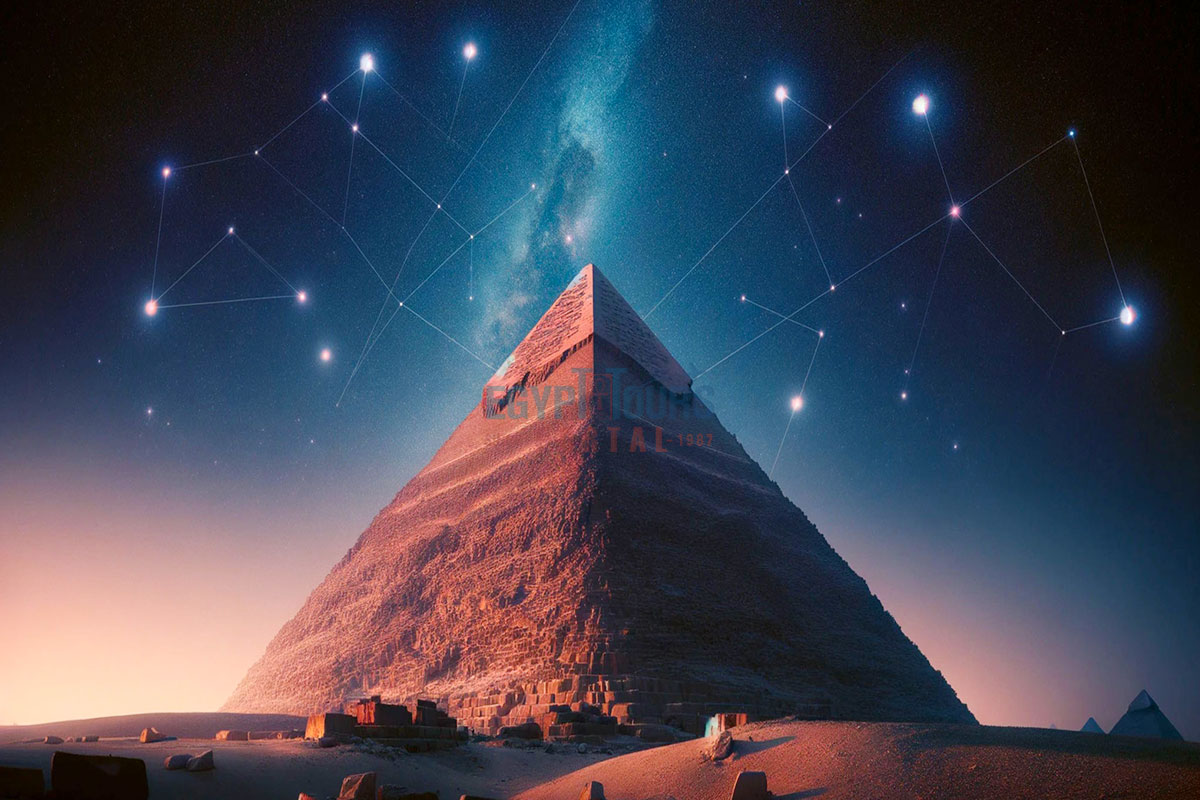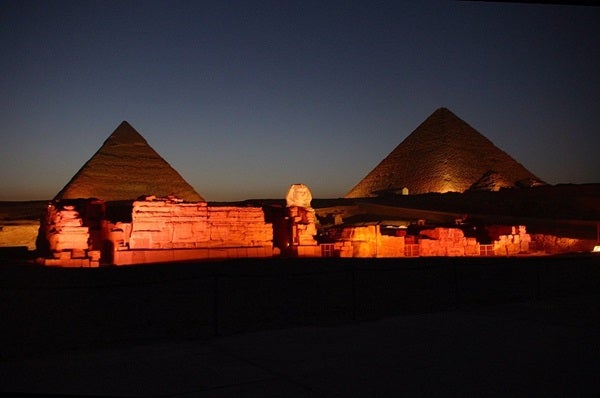
Introduction
Overview of Pyramids of Giza
The Pyramids of Giza, standing majestically on the west bank of the Nile, have captivated countless generations. These monumental structures, primarily built as tombs for pharaohs, showcase remarkable architectural prowess. The Great Pyramid, attributed to Pharaoh Khufu, remains the most iconic, drawing tourists and scholars alike.
Significance of Astronomy in Ancient Egypt
Astronomy played a pivotal role in ancient Egyptian society. The alignment of the pyramids, for instance, reflects an intricate understanding of celestial bodies. Key points include:
- Religious Practices : The stars were viewed as divine, guiding burial traditions.
- Calendrical Systems : The lunar cycles dictated agricultural activities.
- Navigation : Celestial navigation aided trade and exploration.
These factors underscore how deeply intertwined astronomy was with their culture and daily life.
Construction of the Pyramids
Alignment with Astronomical Phenomena
As one delves deeper into the construction of the pyramids, their precise alignment reveals a fascinating connection to astronomical phenomena. The pyramids are oriented almost perfectly to the cardinal points of the compass. This alignment suggests that the ancient Egyptians meticulously observed celestial events.
Key highlights include:
- North Star : The pyramids align closely with Polaris, indicating knowledge of stellar navigation.
- Solstices : Their construction may have coincided with solar events, such as solstices.
Theories on Astronomical Influence
Numerous theories exist regarding the influence of astronomy on pyramid construction. Scholars propose that the architects drew inspiration from the cosmos, intertwining their architectural designs with celestial motifs.
Some prominent theories suggest:
- Sacred Geometry : The layout incorporates advanced geometric principles influenced by celestial patterns.
- Astrological Significance : Certain configurations may correlate with significant astrological events, framing the pharaoh’s journey to the afterlife.
These theories illustrate how the ancients ingeniously integrated their understanding of the universe into monumental architecture.
Solar Alignments
Sun Temples at Giza
Continuing the exploration of celestial connections, the Sun Temples at Giza reveal profound insights into the ancient Egyptians’ reverence for solar deities. These temples, such as the one built for Pharaoh Khufu, reflect architectural ingenuity dedicated to worshiping the sun.
Key features include:
- Open Design : Maximizing sunlight exposure during rituals.
- Solar Symbols : Incorporation of motifs like the sun disk, emphasizing the sun’s vitality.
Relationship to Solar Cycles
The pyramids’ alignment to solar events illustrates their essential relationship with solar cycles. The ancient Egyptians meticulously tracked these cycles, which influenced everything from agriculture to religious ceremonies.
Consider the following:
- Annual Flooding : Solar cycles indicated the timing for the Nile’s flooding, essential for agriculture.
- Festivals : Celebrations like the New Year aligned with solar events, marking important cultural milestones.
In essence, the sun’s journey across the sky was not just a natural phenomenon; it shaped the very fabric of Egyptian civilization.
Stellar Alignments
Orion’s Belt Connection
Shifting our focus to stellar alignments, one cannot overlook the significance of Orion’s Belt in the pyramid layout. The three pyramids of Giza are thought to mirror the three stars that comprise Orion’s Belt, linking the pharaohs with this celestial figure.
Interesting aspects include:
- Cosmic Significance : Orion was associated with Osiris, the god of the afterlife, linking the stars to the pharaoh’s journey beyond death.
- Architectural Precision : The alignment is so precise that it’s difficult to dismiss as mere coincidence, suggesting a deliberate connection to astronomy.
Role of Constellations in Pyramid Layout
Beyond Orion, other constellations played crucial roles in shaping the pyramid layout. The ancient Egyptians viewed the night sky as a divine roadmap.
Key elements of their influence:
- Ka and Ba : The positioning of the pyramids aligned with key constellations was believed to facilitate the pharaoh’s ka (spirit) passage to the afterlife.
- Guiding Stars : Constellations provided a celestial guide for navigation and religious practices.
This celestial blueprint not only reflected their architectural prowess but also emphasized the close intertwining of culture, religion, and astronomy in ancient Egyptian life.
Lunar Alignments
Lunar Calendar Incorporation
As we explore lunar alignments, it’s fascinating to note how deeply the lunar calendar was woven into Egyptian life. Ancient Egyptians meticulously tracked the moon’s phases, using this knowledge for agricultural and ceremonial purposes.
Key highlights include:
- Months of 30 Days : Their lunar calendar helped regulate the agricultural cycle by correlating planting with moon phases.
- Festivals : Many religious events were timed according to the lunar calendar, highlighting the moon’s cultural significance.
Influence on Pyramid Design
The moon’s phases also influenced pyramid design, offering a unique perspective on their construction.
Consider these aspects:
- Architectural Features : Some pyramids included chambers and passages aligned to lunar events, demonstrating advanced understanding.
- Symbolic Representation : The shapes and angles of certain pyramid structures echo lunar cycles, suggesting a blend of utility and symbolism.
By integrating lunar alignments, the ancient Egyptians not only created architectural marvels but also reflected their complex relationship with lunar cycles, showcasing their devotion to understanding the cosmos.
Astronomical Instruments in Pyramid Construction
Gnomon and Shadow Play
Transitioning to the tools utilized in pyramid construction, one cannot overlook the gnomon, a simple yet effective instrument. This vertical peg or stick cast shadows that helped ancient Egyptians measure time and track the sun’s path.
Key points about its use include:
- Timekeeping : They used it to determine the best days for construction based on the sun’s position.
- Alignment : The shadows created precise lines for aligning structures, showcasing their ingenuity and observational skills.
Celestial Navigation Techniques
In addition to the gnomon, celestial navigation techniques played a vital role in guiding the construction process.
Important aspects include:
- Star Positioning : Builders would align corners and passages based on specific stars, ensuring stability and spiritual significance.
- Sky Maps : Knowledge of constellations assisted workers in maintaining orientation while constructing these massive structures.
These instruments not only aided in the physical construction of the pyramids but also embodied the impressive synergy between performance and astronomy within ancient Egyptian civilization.
Legacy of Astronomy in the Pyramids
Continued Study and Discoveries
The legacy of astronomy in the pyramids extends beyond ancient Egypt, inspiring generations of researchers and enthusiasts alike. Ongoing archaeological studies continue to unveil new discoveries related to celestial alignments.
Highlights of current research include:
- Advanced Technologies : Tools such as ground-penetrating radar reveal previously hidden structures aligned with celestial bodies.
- Interdisciplinary Collaboration : Astronomers and archaeologists work together, deepening our understanding of pyramids’ astronomical significance.
Cultural and Scientific Impact
The cultural and scientific impact of the pyramids resonates even today. They’ve become symbols of human ingenuity and the intersection of art and science.
Consider these facets:
- Global Inspiration : Their architectural precision influences modern structures and inspires engineers worldwide.
- Astronomical Understanding : Insights gained from studying the pyramids contribute to a broader understanding of ancient civilizations’ scientific knowledge.
In essence, the pyramids serve as timeless reminders of humanity’s quest to understand the cosmos, cementing their place in both history and contemporary research.
Conclusion
Recap of Astronomy’s Role in Pyramids of Giza
As we conclude our exploration, it’s clear that astronomy played a pivotal role in the construction and significance of the Pyramids of Giza. From solar, stellar, and lunar alignments to the innovative use of astronomical instruments, these structures embody the ancient Egyptians’ profound understanding of the cosmos.
Key takeaways include:
- Architectural Precision : Alignments to celestial events showcase meticulous planning.
- Cultural Symbolism : The pyramids reflect a deep connection to the universe and the afterlife.
Implications for Ancient Civilizations and Modern Science
The legacy of these astronomical practices extends beyond their time, influencing both ancient civilizations and modern scientific advancements.
Important implications include:
- Interdisciplinary Approaches : The collaboration between archaeology and astronomy enriches understanding of human history.
- Inspiration for Innovation : Concepts from ancient construction techniques inspire modern engineering and astronomical observations.
In summary, the Pyramids of Giza remind us of our enduring curiosity about the universe and its intricate relationship with human achievement throughout history.
